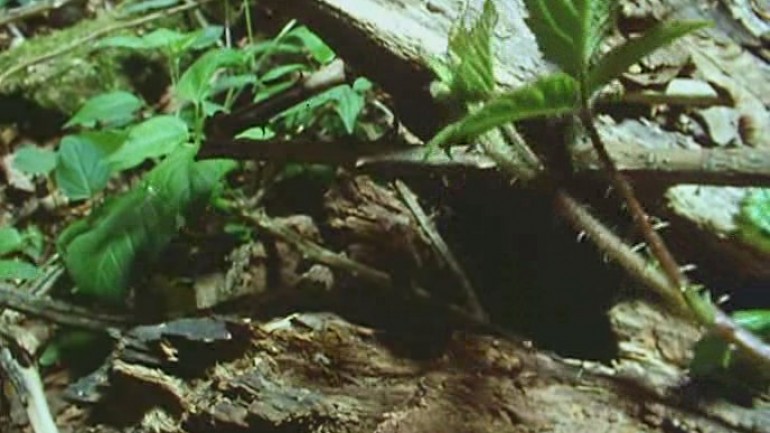Broadcast 2 February 1995, the fifth programme explores the alliances formed between the animal and plant worlds. Attenborough dives into Australia’s Great Barrier Reef and contrasts the nocturnal feeding of coral, on microscopic creatures, with its daytime diet of algae. Some acacias are protected by ants, which will defend their refuge from any predator. Besides accommodation, the guards are rewarded with nectar and, from certain species, protein for their larvae as well. Fungi feed on plants but also provide essential nutriment to saplings. The connection is never broken throughout a tree’s life and a quarter of the sugars and starches produced in its leaves is channelled back to its fungal partners. Meanwhile, fungi that feed on dead wood leave a hollow trunk, which also benefits the tree. Orchids enjoy a similar affiliation. Lichens are the product of a relationship between fungi and a photosynthetic associate, usually algae. They are extremely slow-growing, and a graveyard is the perfect location to discover their exact longevity. Mistletoe is a parasite that obtains its moisture from a host tree, while its seeds are deposited on another by the mistletoe tyrannulet, following digestion of the fruit. The dodder is also parasitic, generally favouring nettles, and siphons its nourishment through periodic ‘plugs’ along its stem. The rafflesia has no stem or leaves and only emerges from its host in order to bloom — and it produces the largest single flower: one metre across.

Advertisement
Join The Conversation



This is an article that I am very impressed with. thank you very much. jacksmith
kind of stupid to have this documentary posted in the “featured” list and its not even a working link. Big up by reporting!
WORKS FOR ME, GUES YOU HAVE TO BE SMARTER THEN THE VIDEO LOL
I agree with fabiang – no doc nor link…